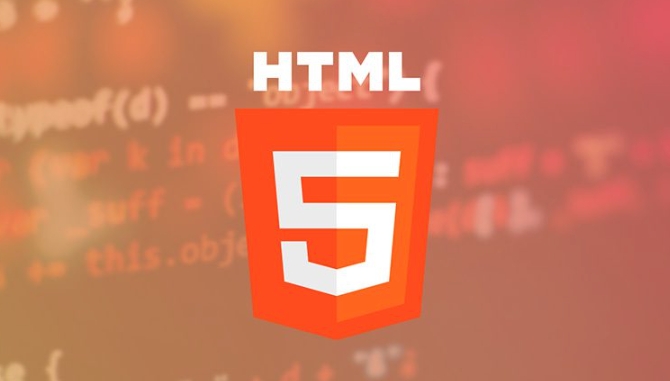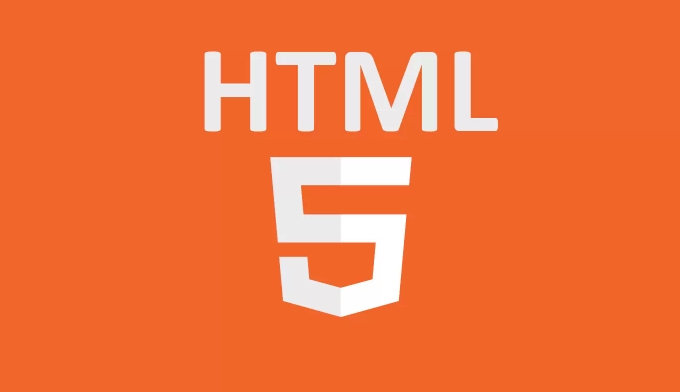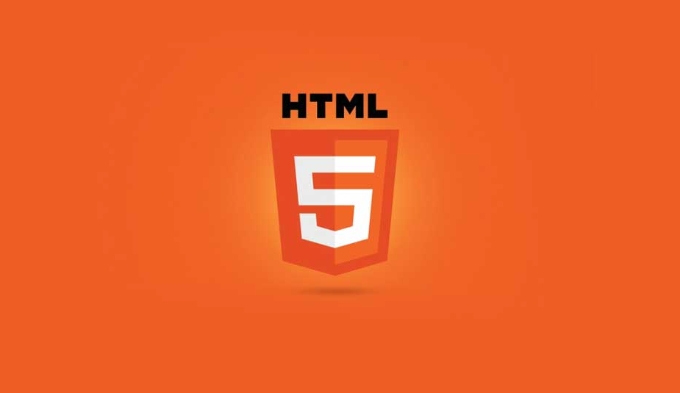Understanding the new input types available in HTML5 forms.
Jul 02, 2025 pm 04:19 PMHTML5 introduces a variety of new input types to improve form functionality and user experience, including email, number, date, range, etc. The email type is used to enter the email address, supports automatic format verification and mobile device optimization keyboard; number is used for digital input, supports setting minimum, maximum and step size; date provides a built-in date selector and submits in ISO format; range implements sliding bar controls, suitable for scenes such as volume or rating. These input types can be elegantly downgraded to normal text boxes in older browsers, ensuring compatibility while enhancing mobile availability.

HTML5 introduced several new input types that make form creation more powerful and user-friendly. These input types help browsers understand what kind of data users should enter, which allows for better validation and even custom keyboard layouts on mobile devices.

Here are a few key input types you should know about and how they can be useful in practice:

email — For email address input
This input type is designed specifically for email addresses. When used on mobile devices, it often triggers an email-optimized keyboard layout with an @ symbol readily accessible.
What it does:

- Browsers will automatically check if the entered value matches a basic email format (like user@domain.com).
- Doesn't require extra JavaScript to validate simple email patterns.
Example usage:
<input type="email" name="user_email" placeholder="you@example.com" required>
Tips:
- Still use server-side validation; browser checks can be bypassed.
- You can allow multiple emails by adding the
multipleattribute.
number — For numeric input
Use this when you want users to enter a number. It usually shows up as a spinner control in desktop browsers or a numeric keypad on mobile.
What it does:
- Restricts input to numbers.
- Supports min, max, and step attributes for fine control.
Example usage:
<input type="number" name="quantity" min="1" max="10" step="1">
Tips:
- Avoid using this for things like postal codes — some countries have leading zeros or other formats that may not work well here.
- If you need decimal values, set
step="any"or specify a decimal step likestep="0.1".
date — For date selection
This input type gives users a built-in date picker in supporting browsers.
What it does:
- Lets users pick a date without needing a JavaScript calendar widget.
- Sends the date in ISO format (
YYYY-MM-DD) to the server.
Example usage:
<input type="date" name="birthday">
Tips:
- Browser support varies — some older ones fall back to a text input.
- Styling is limited because it's rendered by the browser.
range — For slider controls
Useful for letting users pick a value from a range without typing.
What it does:
- Displays a slider.
- Often used for settings like volume, rating, brightness, etc.
Example usage:
<input type="range" name="volume" min="0" max="100" value="50">
Tips:
- Add a
<output></output>element near by showing the current value visually. - Not ideal for precision input since it's hard to select exact values ??with a slider.
There are a few others like tel , url , color , and search , each with their own specific behavior and use cases. While they don't all change functionality dramatically, they do improve usability and accessibility, especially on mobile devices.
Most of these inputs gracefully degrade into regular text fields on older browsers, so you can use them safely while still providing a fallback.
Basically that's it.
The above is the detailed content of Understanding the new input types available in HTML5 forms.. For more information, please follow other related articles on the PHP Chinese website!

Hot AI Tools

Undress AI Tool
Undress images for free

Undresser.AI Undress
AI-powered app for creating realistic nude photos

AI Clothes Remover
Online AI tool for removing clothes from photos.

Clothoff.io
AI clothes remover

Video Face Swap
Swap faces in any video effortlessly with our completely free AI face swap tool!

Hot Article

Hot Tools

Notepad++7.3.1
Easy-to-use and free code editor

SublimeText3 Chinese version
Chinese version, very easy to use

Zend Studio 13.0.1
Powerful PHP integrated development environment

Dreamweaver CS6
Visual web development tools

SublimeText3 Mac version
God-level code editing software (SublimeText3)

Hot Topics
 HTML5: The Building Blocks of the Modern Web (H5)
Apr 21, 2025 am 12:05 AM
HTML5: The Building Blocks of the Modern Web (H5)
Apr 21, 2025 am 12:05 AM
HTML5 is the latest version of the Hypertext Markup Language, standardized by W3C. HTML5 introduces new semantic tags, multimedia support and form enhancements, improving web structure, user experience and SEO effects. HTML5 introduces new semantic tags, such as, ,, etc., to make the web page structure clearer and the SEO effect better. HTML5 supports multimedia elements and no third-party plug-ins are required, improving user experience and loading speed. HTML5 enhances form functions and introduces new input types such as, etc., which improves user experience and form verification efficiency.
 HTML5: The Standard and its Impact on Web Development
Apr 27, 2025 am 12:12 AM
HTML5: The Standard and its Impact on Web Development
Apr 27, 2025 am 12:12 AM
The core features of HTML5 include semantic tags, multimedia support, offline storage and local storage, and form enhancement. 1. Semantic tags such as, etc. to improve code readability and SEO effect. 2. Simplify multimedia embedding with labels. 3. Offline storage and local storage such as ApplicationCache and LocalStorage support network-free operation and data storage. 4. Form enhancement introduces new input types and verification properties to simplify processing and verification.
 HTML5 and H5: Understanding the Common Usage
Apr 22, 2025 am 12:01 AM
HTML5 and H5: Understanding the Common Usage
Apr 22, 2025 am 12:01 AM
There is no difference between HTML5 and H5, which is the abbreviation of HTML5. 1.HTML5 is the fifth version of HTML, which enhances the multimedia and interactive functions of web pages. 2.H5 is often used to refer to HTML5-based mobile web pages or applications, and is suitable for various mobile devices.
 The Connection Between H5 and HTML5: Similarities and Differences
Apr 24, 2025 am 12:01 AM
The Connection Between H5 and HTML5: Similarities and Differences
Apr 24, 2025 am 12:01 AM
H5 and HTML5 are different concepts: HTML5 is a version of HTML, containing new elements and APIs; H5 is a mobile application development framework based on HTML5. HTML5 parses and renders code through the browser, while H5 applications need to run containers and interact with native code through JavaScript.
 Understanding H5: The Meaning and Significance
May 11, 2025 am 12:19 AM
Understanding H5: The Meaning and Significance
May 11, 2025 am 12:19 AM
H5 is HTML5, the fifth version of HTML. HTML5 improves the expressiveness and interactivity of web pages, introduces new features such as semantic tags, multimedia support, offline storage and Canvas drawing, and promotes the development of Web technology.
 H5: Exploring the Latest Version of HTML
May 03, 2025 am 12:14 AM
H5: Exploring the Latest Version of HTML
May 03, 2025 am 12:14 AM
HTML5isamajorrevisionoftheHTMLstandardthatrevolutionizeswebdevelopmentbyintroducingnewsemanticelementsandcapabilities.1)ItenhancescodereadabilityandSEOwithelementslike,,,and.2)HTML5enablesricher,interactiveexperienceswithoutplugins,allowingdirectembe
 HTML5: Limitations
May 09, 2025 pm 05:57 PM
HTML5: Limitations
May 09, 2025 pm 05:57 PM
HTML5hasseverallimitationsincludinglackofsupportforadvancedgraphics,basicformvalidation,cross-browsercompatibilityissues,performanceimpacts,andsecurityconcerns.1)Forcomplexgraphics,HTML5'scanvasisinsufficient,requiringlibrarieslikeWebGLorThree.js.2)I
 Significant Goals of HTML5: Enhancing Web Development and User Experience
May 14, 2025 am 12:18 AM
Significant Goals of HTML5: Enhancing Web Development and User Experience
May 14, 2025 am 12:18 AM
HTML5aimstoenhancewebdevelopmentanduserexperiencethroughsemanticstructure,multimediaintegration,andperformanceimprovements.1)Semanticelementslike,,,andimprovereadabilityandaccessibility.2)andtagsallowseamlessmultimediaembeddingwithoutplugins.3)Featur






